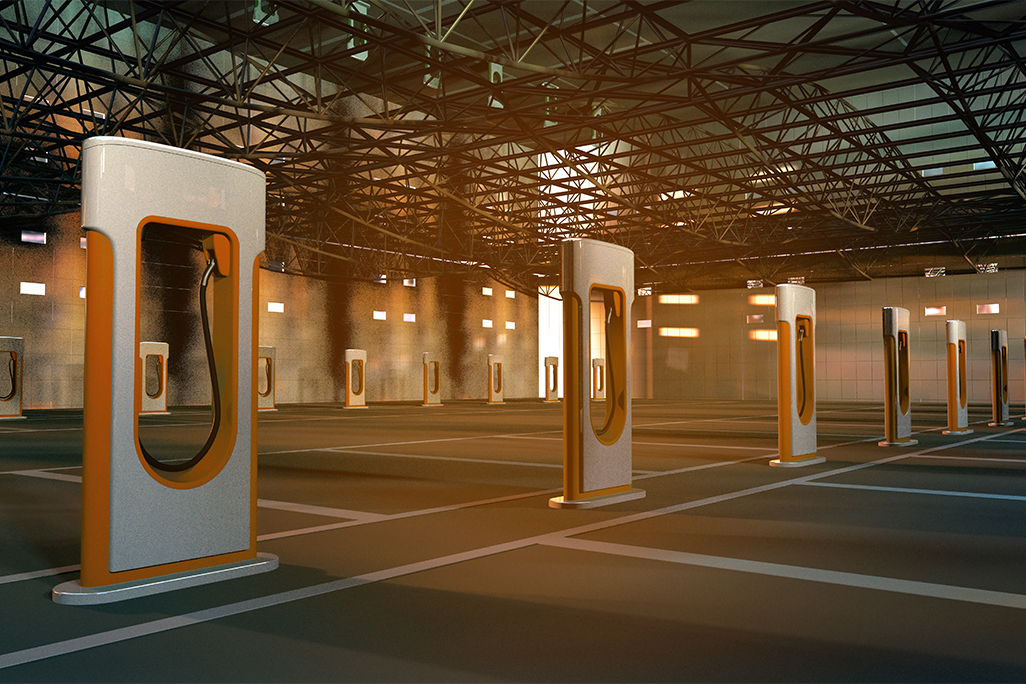Crediting electricity for electric vehicles towards the greenhouse gas quota
Published on 29th April 2022
The obligation to meet the greenhouse gas reduction quota can also be met with electricity used to charge electric vehicles

With the amendment of the 38th Federal Immission Control Ordinance on 1 January 2022, further incentives for greenhouse gas reduction through electric mobility will be created and charging infrastructure is indirectly promoted.
Companies that distribute fossil fuels in Germany are legally obliged to reduce the greenhouse gas (GHG) emissions associated with the fuels by a certain percentage, the GHG quota. This is an obligation that must be fulfilled for the respective calendar year in which the fuels are distributed (the so-called obligation year). To determine whether the GHG quota is met, the company’s GHG emissions are compared with a reference value.
In order to fulfil their GHG reduction obligation, the obligated companies have a variety of fulfilment options at their disposal. For example, the electricity used for charging pure battery electric vehicles and externally chargeable hybrid electric vehicles can also be counted towards the fulfilment of the GHG quota.
The fulfilment of this obligation can also be transferred by the obligated companies to third parties if and to the extent that they cannot fulfil the obligation themselves (quota trading).
The applicable regulations differ in detail depending on whether the electricity is withdrawn from publicly or non-publicly accessible charging points.
Publicly accessible charging points
Charging points are facilities suitable and intended for charging (and perhaps un-charging) electric vehicles: that is, the main purpose of the charging point must be the charging of electric vehicles. Charging points are generally considered publicly accessible if the group of people who can use the associated parking space is not determined from the outset. The best example of this is parking spaces of shopping centres that are open to any possible customer.
The actual delivery of electricity to electric vehicles forms the basis for the purpose of the GHG mitigation mechanism. Records must be kept for the respective charging point, regarding its location, the amount of electricity delivered by the charging point in megawatt hours and the period of electricity consumption, if not the entire respective calendar year. The necessary records also include the notification of the charging point operator to the Federal Network Agency (Bundesnetzagentur).
The calculation of GHG emissions of electrical power is based on the average GHG emissions of electricity in Germany. For publicly accessible charging points, however, the average emissions of the respective renewable energy used may be applied instead of the Germany-wide average. This is the case if the charging infrastructure exclusively utilises electricity from renewable energy sources and the electricity is not withdrawn from the general supply grid but is obtained directly from an electricity generation plant of the operator. However, this electricity generation plant must not be directly or indirectly connected to a general supply grid. The electricity generation plant must therefore be a stand-alone plant that is completely detached from the grid.
Since off-grid systems are extremely rare, this privilege only rarely applies in practice. From an environmental perspective, it is not apparent why the legal regulations do not also privilege electricity charged by electric vehicles generated on site in a renewable energy system that is, however, connected to the grid.
Non-publicly accessible charging points
The crediting of electricity from non-publicly accessible charging points is only possible if the electricity is used in a pure battery electric vehicle. Therefore, corresponding records of the persons in whose name a pure battery electric vehicle is registered are required, as well as copies of the vehicle registration documents (registration certificate part I), which must be retained for three years. Electricity charged by hybrid electric vehicles is not eligible for these purposes.
The quantities of electricity charged do not have to be recorded. In this respect, a fixed estimated value published by the Federal Ministry for the Environment, Nature Conservation and Nuclear Safety (Bundesministerium für Umwelt, Naturschutz und nukleare Sicherheit) applies.
Crediting procedure
As a basis for quota trading, the Federal Environment Agency issues certificates on the eligible electricity quantities from charging points and the GHG emissions at the request of the third party. The application must be submitted by 28 February of the year following the obligation year.
For the electricity quantities to be credited via quota trading for the purposes of meeting the GHG quota, the relevant information must be submitted to the responsible main customs office (Hauptzollamt) in Frankfurt (Oder) by 15 April of the year following the obligation year.
Quota trading
Companies that are obligated to reduce greenhouse gases and are unable or unwilling to achieve their GHG quota themselves can transfer the (partial) fulfilment of their quota obligation to third parties by means of quota trading. To do this, the obligated company and the third party must enter into a corresponding contract, the minimum content of which is set by law.
The returns from quota trading depend on various factors, for example, the extent to which the electricity or (bio) fuel used by the third party contributes to GHG reductions and – in particular – the market price. The more quotas a third party can offer, the higher the price that can be negotiated with obligated companies. Therefore, it is advisable for smaller and medium-sized market participants to sell their quotas to a service provider that bundles these amounts.
The returns from quota trading should benefit the party that bears the investment in the charging infrastructure, that is, the operator of the charging points. Besides commercial operators of public charging points, this can also include private individuals who have a charging point at their private parking space, employers who operate charging points for reasons related to their business or to supply their employees, or companies that equip private properties or buildings with charging points. By using the mechanisms of quota trading, private individuals – with the assistance of service providers – can, for example, earn an annual fee of 200 to 400 euros per vehicle.
This Article was first published in German in AUTOBUSINESS | April 2022.




